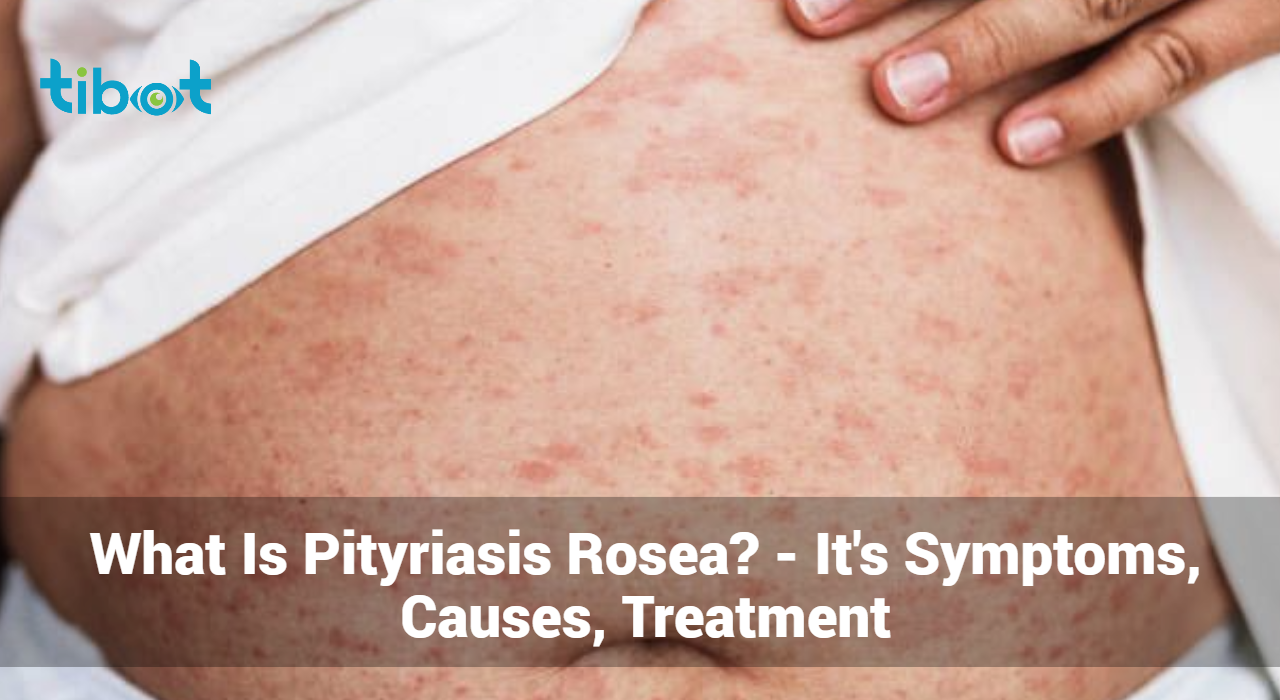What Is Pityriasis Rosea? – It’s Symptoms, Causes, Treatment

Pityriasis Rosea is a common, benign skin condition characterized by distinctive rash patterns and a self-limiting course. It often perplexes patients and healthcare providers due to its resemblance to other skin conditions and the variability in its presentation. This comprehensive article aims to elucidate the symptoms, causes, and treatment options for Pityriasis Rosea while ensuring it is well-optimized for search engines.
What is Pityriasis Rosea?
Pityriasis Rosea is an acute skin condition that typically presents as a rash with a specific pattern and progression. It is characterized by the appearance of a single, large “herald patch” followed by a generalized rash that often takes on a “Christmas tree” pattern on the back. While it is not a severe or life-threatening condition, its symptoms can be distressing and confusing for those affected.
What Are The Symptoms of Pityriasis Rosea?
The symptoms of Pityriasis Rosea can vary, but they commonly include:
- Herald Patch: The condition often begins with a single, large, round or oval patch called the herald patch. This patch is usually pink or salmon-colored and is often larger than the subsequent smaller patches. It typically appears on the trunk, neck, or arms.
- Secondary Rash: About 1 to 2 weeks after the herald patch appears, smaller patches or plaques develop across the body. These secondary patches are usually oval, pink or light red, and follow the natural lines of the skin. The rash often has a scaly appearance.
- Rash Distribution: The rash commonly follows a “Christmas tree” pattern on the back, with the patches oriented along the lines of the ribcage. It can also spread to the chest, abdomen, and upper arms, though it is less common on the legs and face.
- Itching: Some people with Pityriasis Rosea experience itching, which can vary from mild to severe. The degree of itching is not necessarily correlated with the severity of the rash.
- General Symptoms: While most people with Pityriasis Rosea do not experience systemic symptoms, some may report mild fatigue, headache, or low-grade fever.
What Causes of Pityriasis Rosea?
The exact cause of Pityriasis Rosea remains unclear, but several theories exist:
- Viral Infection: Some research suggests that Pityriasis Rosea may be triggered by a viral infection, particularly human herpesvirus type 7 (HHV-7) or, less commonly, human herpesvirus type 6 (HHV-6). However, no specific virus has been definitively linked to the condition.
- Immune Response: Another theory posits that Pityriasis Rosea is an autoimmune reaction where the immune system mistakenly targets the skin cells.
- Genetic Factors: While no direct genetic link has been established, some studies suggest that individuals with a family history of the condition may be more predisposed to developing it.
- Environmental Triggers: Environmental factors such as stress, seasonal changes, or exposure to certain chemicals might trigger or exacerbate the condition, though there is no concrete evidence supporting these triggers.
Diagnosis of Pityriasis Rosea
Diagnosing Pityriasis Rosea typically involves:
- Clinical Examination: A healthcare provider will perform a physical examination of the rash and look for characteristic patterns. The presence of a herald patch followed by a generalized rash is usually indicative of Pityriasis Rosea.
- Medical History: A detailed medical history may be taken to identify any recent illnesses, exposures, or other factors that might be relevant.
- Skin Biopsy: In uncertain cases, a skin biopsy may be performed. This involves taking a small sample of skin tissue for laboratory analysis to rule out other conditions with similar presentations.
- Laboratory Tests: Although not routinely necessary, laboratory tests may be conducted to exclude other conditions, such as syphilis or psoriasis, which can present with similar symptoms.
Analyze Skin Diseases
Use our AI chatbot to determine your skin condition
Treatment of Pityriasis Rosea
Pityriasis Rosea is generally a self-limiting condition, meaning that it typically resolves on its own within 6 to 8 weeks without medical intervention. However, various treatment options can help alleviate symptoms and improve comfort:
- Topical Treatments:
- Steroid Creams: Mild to moderate topical corticosteroids can help reduce inflammation and itching. They are applied directly to the affected areas of the skin.
- Moisturizers: Regular use of emollients or moisturizers can help soothe the skin and alleviate dryness and itching.
- Oral Medications:
- Antihistamines: Oral antihistamines, such as loratadine or cetirizine, can help manage itching and improve overall comfort.
- Systemic Steroids: In rare cases of severe itching or widespread rash, oral corticosteroids may be prescribed for a short period.
- Phototherapy:
- UV Light Therapy: In some instances, ultraviolet light therapy (UVB phototherapy) may be used to help clear the rash and reduce symptoms. This treatment involves exposing the skin to controlled amounts of UV light under medical supervision.
- Lifestyle Adjustments:
- Avoiding Irritants: Using gentle, fragrance-free skincare products and avoiding known skin irritants can help prevent further irritation.
- Managing Itching: Applying cool compresses and avoiding hot showers can help minimize itching and discomfort.
- Monitoring and Follow-Up:
- Regular Check-Ups: Follow-up and consult a dermatologist or healthcare provider may be necessary to monitor the progression of the rash and ensure that it resolves appropriately.
Prognosis and Outlook
The prognosis for Pityriasis Rosea is generally favorable. Most individuals experience complete resolution of the rash within 6 to 8 weeks without long-term complications. The condition does not usually leave scars or permanent skin changes, though some people may experience residual skin discoloration or mild peeling.
Prevention of Pityriasis Rosea
Since the exact cause of Pityriasis Rosea is unknown, specific preventive measures are not well-defined. However, general skin care and health practices can help maintain overall skin health:
- Healthy Skin Care Routine: Maintaining a consistent skincare routine that includes moisturizing and avoiding irritants can support skin health and potentially reduce the risk of exacerbating existing conditions.
- Stress Management: Managing stress through relaxation techniques and a healthy lifestyle may help support overall immune function and skin health.
- Regular Check-Ups: Routine skin examinations with a healthcare provider can help detect any skin changes early and provide appropriate management.
Conclusion
Pityriasis Rosea is a common, benign skin condition that often resolves on its own within a few months. While the exact cause remains uncertain, the characteristic symptoms and progression of the rash are well-documented, aiding in diagnosis and management. Treatment primarily focuses on alleviating symptoms and ensuring patient comfort. If you suspect you have Pityriasis Rosea or have any concerns about your skin health, it is essential to consult a healthcare provider for an accurate diagnosis and appropriate management.





